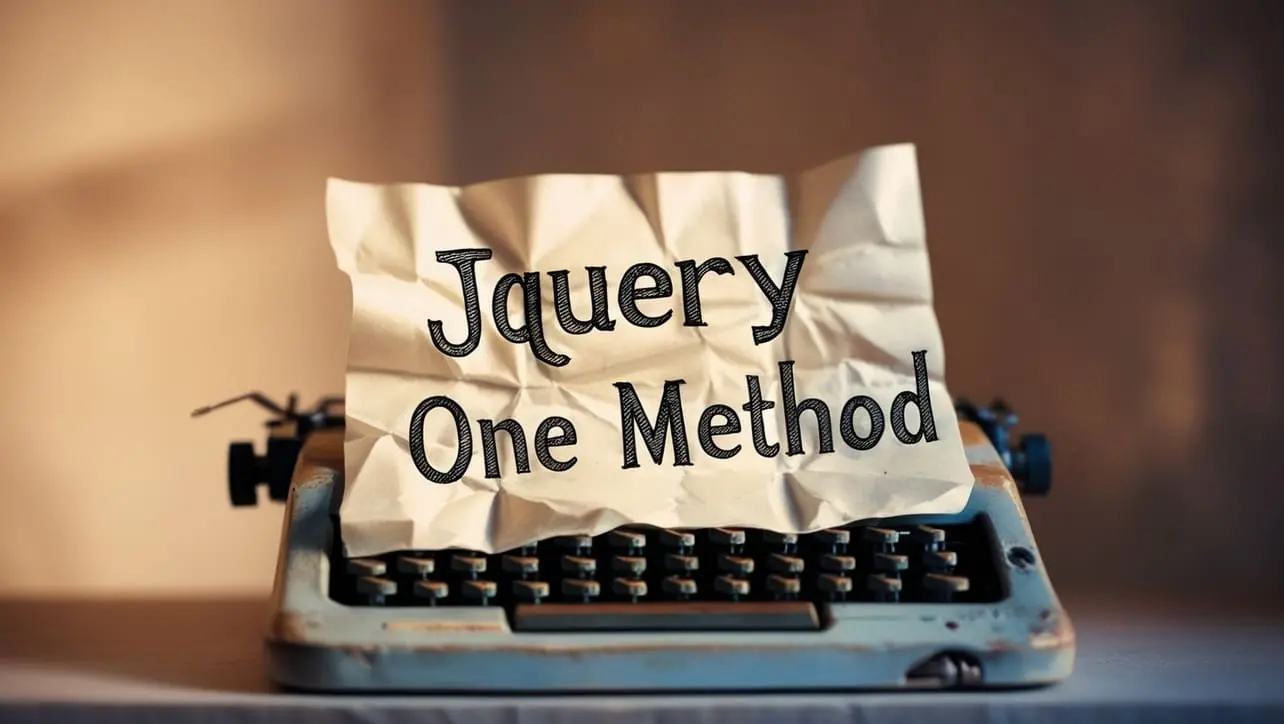
jQuery Topics
- jQuery Introduction
- jQuery Callbacks
- jQuery deferred
- jQuery selectors
- jQuery Ajax Events
- jQuery Ajax Methods
- jQuery Keyboard Events
- jQuery Keyboard Methods
- jQuery Form Events
- jQuery Form Methods
- jQuery Mouse Events
- jQuery Mouse Methods
- jQuery Event Properties
- jQuery Event Methods
- jQuery HTML
- jQuery CSS
- jQuery Fading
- jQuery Traversing
- jQuery Utilities
- jQuery Properties
jQuery .one() Method

Photo Credit to CodeToFun
🙋 Introduction
In jQuery, the .one() method is a handy tool that allows you to attach an event handler to an element that will only execute once. This method can be particularly useful when you need to ensure that an event is triggered only the first time it occurs, preventing unnecessary repetition.
In this guide, we'll explore the functionality and usage of the jQuery .one() method with clear examples to help you leverage its power effectively.
🧠 Understanding .one() Method
The .one() method in jQuery is used to attach an event handler to elements that will execute only the first time the event occurs. Once the event is triggered and the handler is executed, it is automatically removed from the element, ensuring it won't be triggered again.
💡 Syntax
The syntax for the .one() method is straightforward:
$(selector).one(event, handler)📝 Example
Executing an Event Handler Once:
Suppose you have a button and you want to display an alert message the first time it's clicked. You can achieve this using the
.one()method as follows:index.htmlCopied<button id="myButton">Click Me</button>example.jsCopied$("#myButton").one("click", function() { alert("Button clicked!"); });After the first click, subsequent clicks on the button will not trigger the alert message.
Binding Multiple Events with .one():
You can also bind multiple events to an element using
.one(). In this example, we'll bind both the mouseenter and mouseleave events to a div element:index.htmlCopied<div id="myDiv" style="width: 200px; height: 200px; background-color: lightblue;"></div>example.jsCopied$("#myDiv").one({ mouseenter: function() { $(this).text("Mouse entered!"); }, mouseleave: function() { $(this).text("Mouse left!"); } });Once the mouse enters and leaves the div, the event handlers are removed, ensuring they only execute once.
Using
.one()with Delayed Event Binding:You can also use
.one()in conjunction with delayed event binding. This can be useful when you want to attach an event handler after a certain condition is met, ensuring it only executes once:example.jsCopied$("#myElement").one("click", function() { // Do something after the element is clicked once });
🎉 Conclusion
The jQuery .one() method provides a convenient way to attach event handlers that execute only once, ensuring efficient and concise event management in your web applications. Whether you need to execute a function the first time an element is interacted with or bind events that should only occur once, the .one() method offers a simple and effective solution.
By incorporating .one() into your jQuery toolkit, you can enhance the user experience and streamline your code effectively.
👨💻 Join our Community:
Author

For over eight years, I worked as a full-stack web developer. Now, I have chosen my profession as a full-time blogger at codetofun.com.
Buy me a coffee to make codetofun.com free for everyone.
Buy me a Coffee












If you have any doubts regarding this article (jQuery .one() Method), please comment here. I will help you immediately.